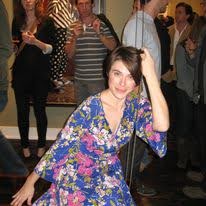
It happens in a moment. You stand before a painting—perhaps something familiar, perhaps something new—and something shifts. It’s not a grand revelation, not quite, but a slight rearranging of the mind, like furniture being moved in a room you thought you knew. The world tilts. You blink.
I have been thinking lately about how looking at art changes the brain. Not in the way we are told it does, not in the neat bullet points of self-improvement manuals—”boosts creativity,” “enhances problem-solving”—but in the way it actually happens, the way the mind stirs and stretches, the way we are altered without our consent.
Consider this: in 2011, a study found that looking at art increases dopamine levels in the brain, the same chemical released when you fall in love. This makes sense. Art seduces. You stare at a painting, and it stares back. You let it happen. Maybe you don’t even know what you are looking at—some Rothko, a swirl of color, or a Dutch interior, light slanting through a window, the frozen moment of an ordinary afternoon. It does not matter. The brain responds.
There is also the question of memory. In medical schools, students are now trained to look at paintings, the theory being that close observation hones diagnostic skills. This is not surprising. Looking at art requires attention, and attention is, after all, the rarest and purest form of generosity. We spend our days skimming, scrolling, filtering, deciding in an instant what is worth our time. But art forces us to stop. To look. To notice. And in doing so, it carves a space in the mind, a memory where there was none before.
Art also does something else: it rearranges our sense of self. You walk through a museum, and by the time you leave, you are not quite the same person who entered. Maybe you have seen something unsettling. Maybe something beautiful. Maybe something that made you think, I have felt that too, I just never knew how to say it. Neuroscientists call this “mirror neuron activation.” Poets call it recognition.
And then there is the fact that looking at art can quiet the nervous system, lower cortisol levels, reduce stress. I think of the people I have seen standing before paintings for long minutes at a time, as if waiting for the artwork to tell them something important. Maybe it does. Maybe it is simply this: Slow down. Pay attention. Remember that you are here, that you are looking, that you are thinking.
These are small things, but they are not insignificant. We like to think of change as something dramatic, a before and after, but more often, change happens in increments, in the flicker of a thought, in the act of looking at something and finding that, for reasons you cannot explain, you will not forget it.
And so we go on, looking.

